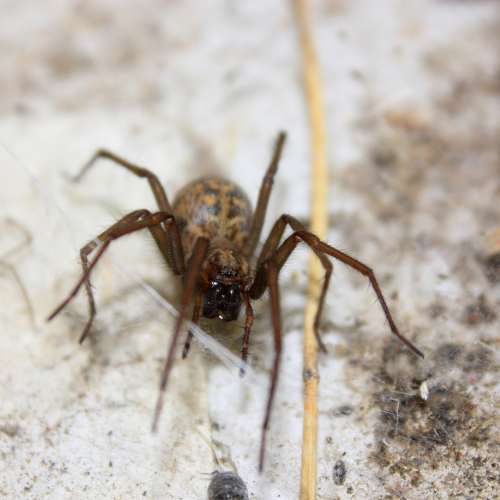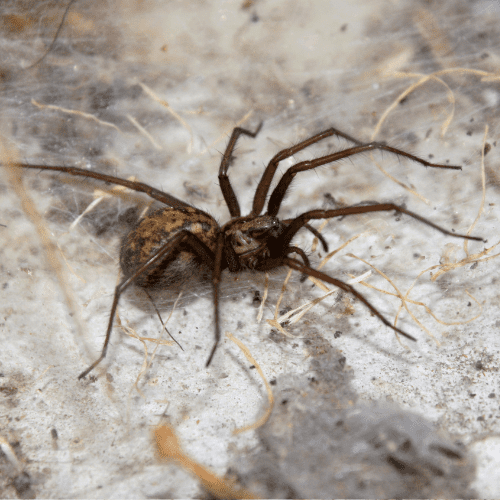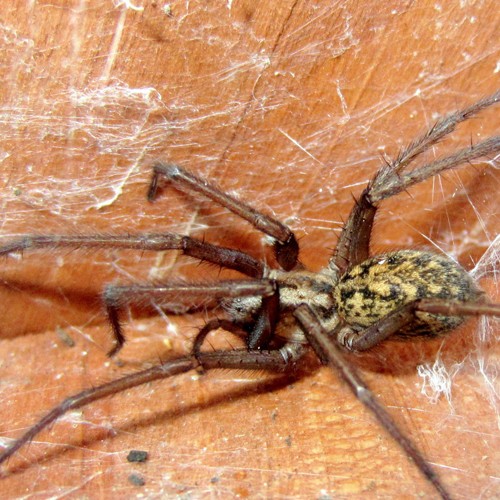Hobo Spider
Introduction to
Hobo spiders, often confused with more dangerous arachnids, are common household pests in the Pacific Northwest of the United States. Known for their rapid movement and funnel-shaped webs, these spiders can cause concern due to their bite, which was once believed to be medically significant. Understanding how to identify, prevent, and professionally manage hobo spiders is crucial for maintaining a safe living environment. This article explores the recognition, biology, habits, prevention, and professional handling of hobo spiders.
Recognition
Hobo spiders are medium-sized, with a body length ranging from 7 to 14 millimeters. Their coloration is generally brownish, with chevron patterns on the abdomen. Unlike many other spiders, hobo spiders do not have distinctive markings on their legs, which are long and spiny. One of their defining features is their funnel-shaped web, which they construct in corners and crevices. The web has a distinctive tunnel where the spider hides, waiting for prey. Identifying these webs, along with the spider’s physical characteristics, can help in recognizing a hobo spider presence.
Biology
Hobo spiders belong to the family Agelenidae and are native to Europe, having been introduced to the United States in the 20th century. They are often found in homes, basements, and other dark, secluded areas. Hobo spiders are ground-dwelling and rarely climb vertical surfaces. Their diet consists mainly of insects and other small arthropods, which they catch using their funnel-shaped webs. The female hobo spider lays eggs in a silken sac, which can contain up to 100 eggs. The spiderlings hatch and disperse, and they can take up to two years to reach maturity. Hobo spiders have a lifespan of about 1-3 years.
Habits
Hobo spiders are primarily active at night, hunting for prey or tending to their webs. They prefer dark, undisturbed areas and are commonly found in basements, crawl spaces, and around foundations. Unlike many other spiders, hobo spiders are not good climbers and usually stay close to the ground. They are known for their fast running speed, which they use to capture prey and escape threats. While their bites were once thought to cause necrotic lesions, recent studies suggest that they are not as dangerous as previously believed. However, their bites can still be painful and may cause mild reactions.
Prevention
Preventing hobo spider infestations involves maintaining a clean and clutter-free home environment. Seal cracks and crevices around windows, doors, and foundations to prevent spiders from entering. Use screens on windows and doors to keep spiders out while allowing ventilation. Reduce clutter in basements, attics, and crawl spaces to eliminate potential hiding spots. Regularly vacuum and clean areas where spiders are likely to build webs. Consider using sticky traps and natural deterrents like essential oils to keep spiders at bay. Proper yard maintenance, such as trimming vegetation and removing debris, can also reduce the likelihood of hobo spiders entering your home.
Professional
If you suspect a hobo spider infestation, it is advisable to seek professional pest control services. STL Pest Control offers specialized treatment plans to manage and eliminate hobo spiders. Their experienced technicians will conduct a thorough inspection to identify infested areas and apply targeted treatments to eradicate the spiders. They also provide ongoing monitoring and preventive measures to ensure that the infestation does not recur. Professional intervention is crucial for safely managing hobo spiders and minimizing the risk of bites and discomfort.



Our Office









